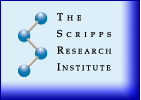| Restenosis
after Coronary Artery Angioplasty and Stent Placement:
Cardiovascular disease is the major cause of mortality in
the United States. Most of these deaths are due to myocardial
infarction caused by coronary artery atherosclerosis. A recent
advancement in the treatment of coronary atherosclerosis is
percutaneous transluminal coronary angioplasty combined with
implantation of a balloon-expandable stent, which acts as
a metallic scaffold to maintain patency of the diseased vessel.
An adverse consequence of this procedure, which usually occurs
within 3-12 months, is a proliferation of cells in the wall
of the artery, a process termed neointimal hyperplasia. In
many patients, neointimal hyperplasia narrows the lumen of
the vessel (i.e. causes restenosis) and results in impaired
myocardial blood flow. The porcine in vivo coronary artery
injury model most closely resembles the process of restenosis
after stent placement in humans and therefore provides the
best system for delineating the pathophysiology of neointimal
hyperplasia. Oligonucleotide microarray technology provides
unprecedented opportunities to understand and treat human
disease. The pattern of mRNA abundance can be used to gain
insight into the “molecular circuitry” of disease.
In collaboration with Dr. Robert Russo at Scripps Clinic ,
we are using this technology to explore the molecular basis
of restenosis. Our preliminary analysis suggests that levels
of mRNA for several genes are dramatically changed. Identification
of cell receptors and signaling pathways associated with stent-induced
vascular injury in this porcine model may guide the design
of novel treatments to prevent restenosis in humans.
|


